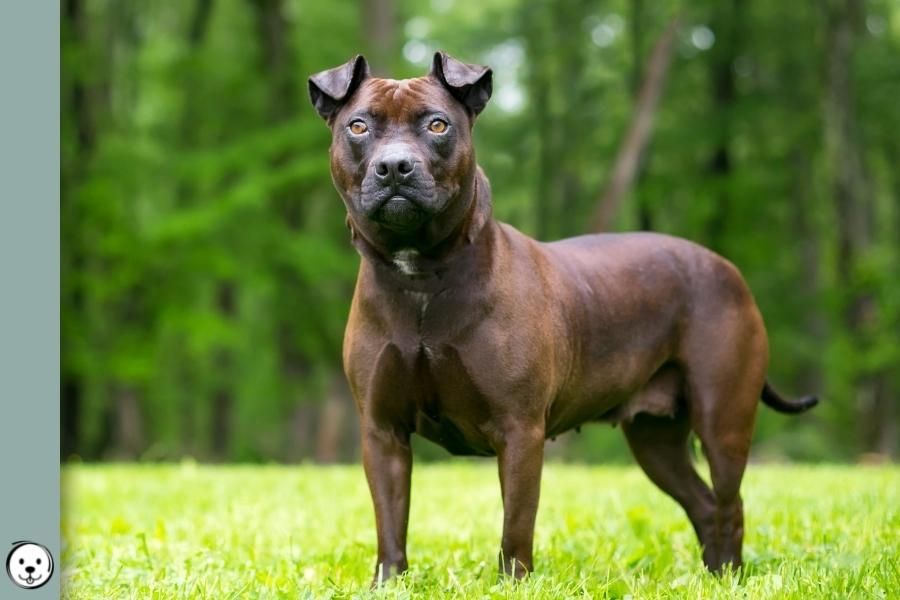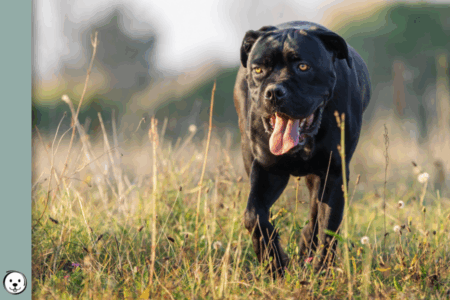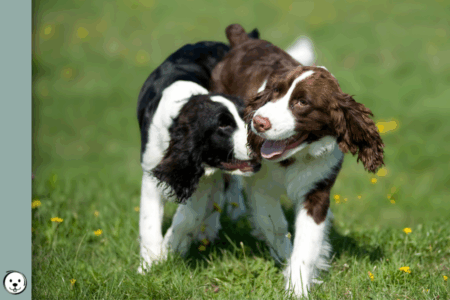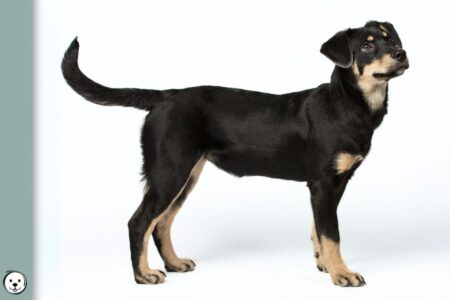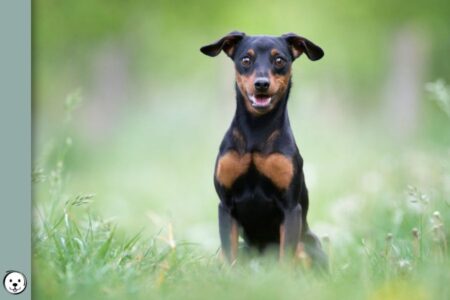Seal causes a more or less pronounced golden, red, or brownish sheen on a dark coat. This is often accompanied by a darker dorsal stripe and darker coloration on the lower legs, tail, and face. Ghost patterns seem to be caused by incomplete dominant black that can’t fully mask a dog’s A locus pattern.
But the genetics of seal are still a mystery!
What Is Ghost Tan?
A ghost pattern only happens in dogs with a KB/- genotype.
Normally, this would cause a solid dominant black phenotype in all pigmented areas.
But in seal or ghost tan coloration, a yet unknown allele or modifier causes a phenotype that is often described as incomplete dominant black, some kind of modified dominant black, or simply “bad black“.
Seal does not happen in breeds that don’t have any KB in their gene pool (e.g. breeds that are fixed for ky/ky such as Shelties, Beagles, or Shibas).
Apparently, a dog has to be dominant black to have a ghost pattern showing through.
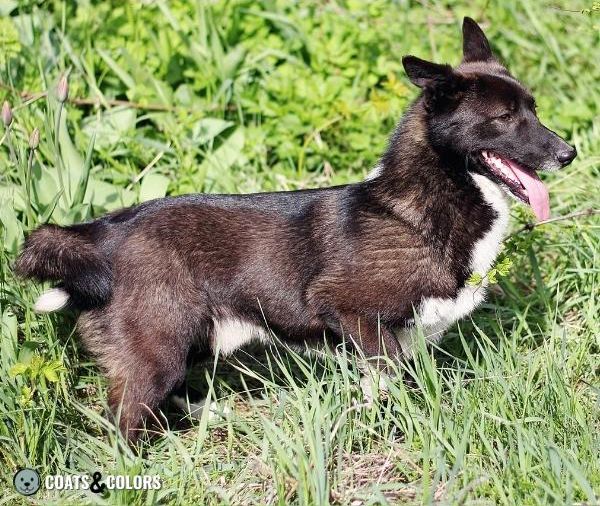
The black in a seal coat can’t cover the agouti gene pattern as it should.
So whatever a dog has on its A locus will faintly or very obviously shine through the black coat.
The pale areas in ghost patterns can only show where there would be yellow in the hidden A locus pattern. Only a genotypically KB/- sable or agouti dog can be full-body “seal” aka ghost sable or ghost agouti. A dog with tan points under its black coat can only have ghost tan points. A dog with a hidden sadlde pattern will be ghost saddle.
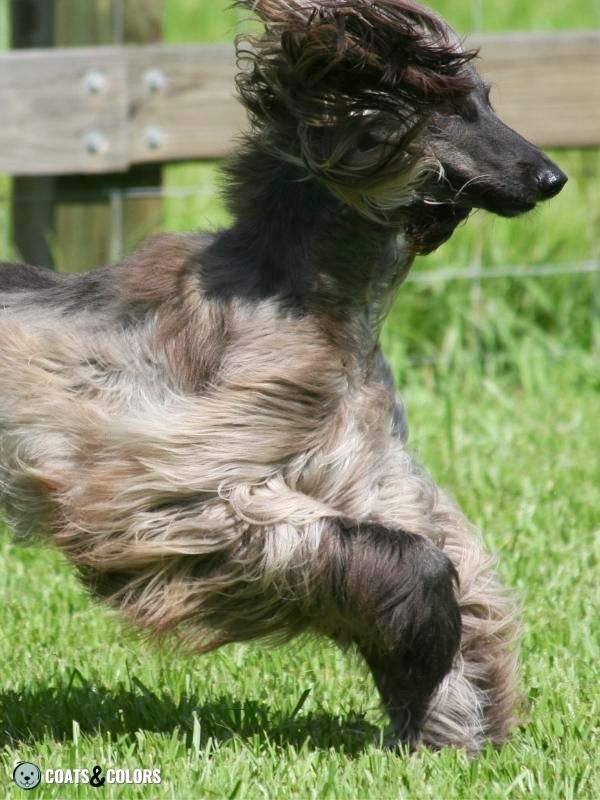
Since a sable dog would be yellow all over, its “seal factor” affects the whole coat and can be seen on dogs that are genetically KB/- Ay/- or, in some rarer cases, KB/- aw/-.
Most of the body gets an unusual coppery, bronze-colored, golden, red, or even brown shade . Often with a dorsal stripe along the back and black on the extremities, tail, face, and ears.
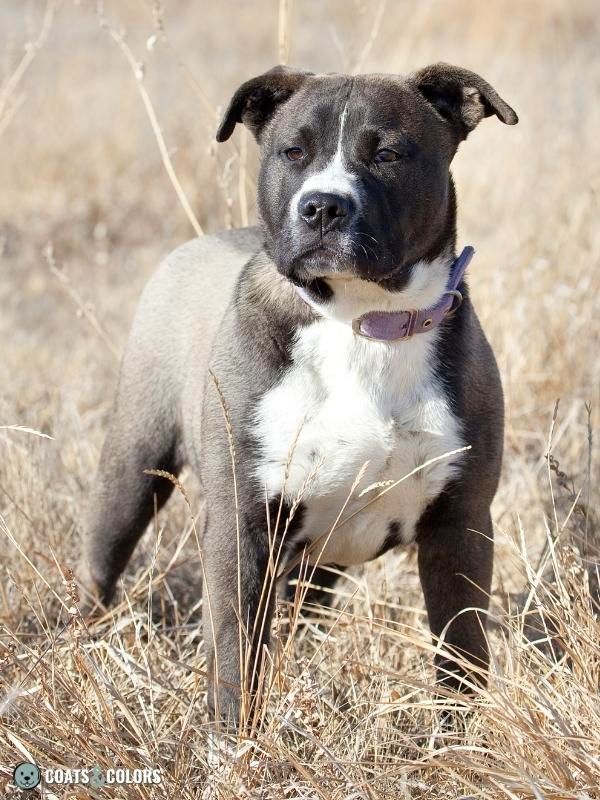
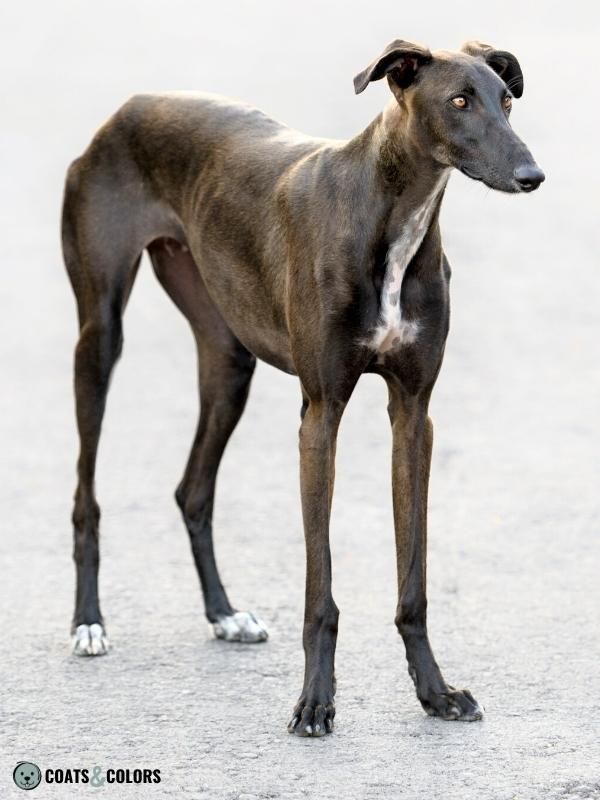
Seal can be combined with brindle striping to form seal brindle, a combination sometimes found in breeds like Boston Terriers, Boxers, Cane Corso, or some brindled sighthounds.
Black seal can look very reddish brown. However, affected dogs will still keep their black nose which is impossible in a truly liver-colored dog.
A long-haired seal and dogs with low red intensity sometimes have “silver highlights” on their shoulders. Or they have a very pale undercoat showing through in their trousers. And seal in puppy coats can get very pale in the first months, while the hidden ghost pattern goes through its “pale phase”.
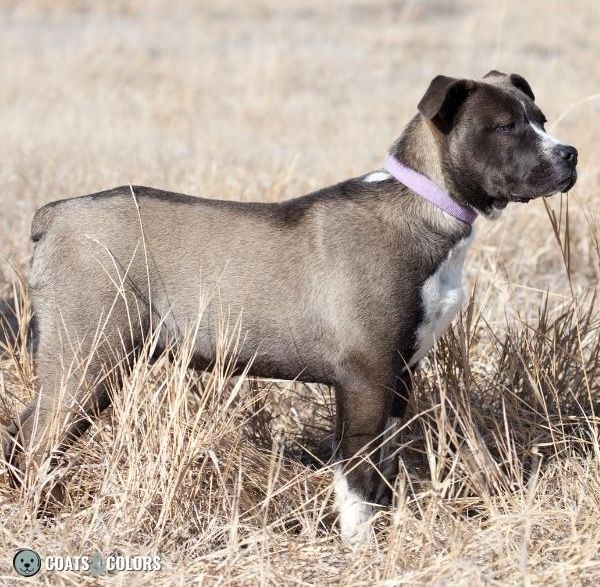
Other ghost tan patterns work the same way as seal but appear on dogs are not Ay/- or aw/-.
For example, ghost tan points do not turn all of the coat pale like seal does. Instead, they cause a very subtle tan or red cast only visible in the areas where the traditional tan points would be. Ghost tan points can most often be spotted in direct sunlight as a reddish area on the cheeks or on the lower legs.
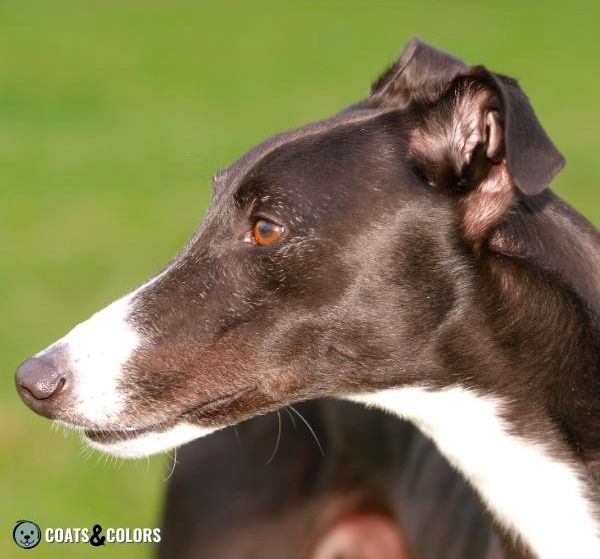
Seal and ghost tan can be seen best in direct sunlight and in standing next to a normal black dog. Puppies born with a seal coloration already look paler or more brownish-yellow in comparison to normal black siblings.
Which Breeds Can Have Ghost Tan?
Seal and other ghost tan phenotypes happen in very many different breeds.
Since this only affects dogs that have dominant black (KB/-), this only happens in dog breeds that have KB in their gene pool. Whatever causes incomplete dominant black might be present in other breeds, but it can not affect dogs that are ky/ky.
Here are just some examples of breeds where you can often find seal phenotypes:
- Pug
- Boxer
- Boston Terrier
- American Staffordshire Terrier
- Border Collie
- Greyhound
- Whippet
- Poodle
- Afghan Hound
- Havanese
- American Staffordshire Terrier
- German Shepherd Dog
Variability Of Seal
Seal can be impossible to see in already lighter coats. There are many combinations like seal merle, seal domino, graying & seal, blue seal, liver seal, or lilac seal with only very few confirmed examples.
Some of these are especially hard to spot in pictures.
Classic Seal Coloration
We don’t know which “secret ingredient” causes seal. But we know that it mostly happens in dogs with a KB/ky (rarely also seen in KB/KB) genotype paired with Ay/- at the A locus.
A black seal dog can get very pale and resemble a liver-colored dog to some degree. But there are no “black-nosed brown dogs” since brown eumelanin would always turn the coat and the nose pigment brown.
So if the nose looks black but the dog looks brown, it might be seal!
Typically, seal dogs have a black dorsal stripe, black lower legs, a black tail, and a black muzzle (although the black muzzle might be from also having Em/, who knows). A similar, but maybe slightly darker and much more rare combination is agouti seal in dogs with KB/- aw/-.
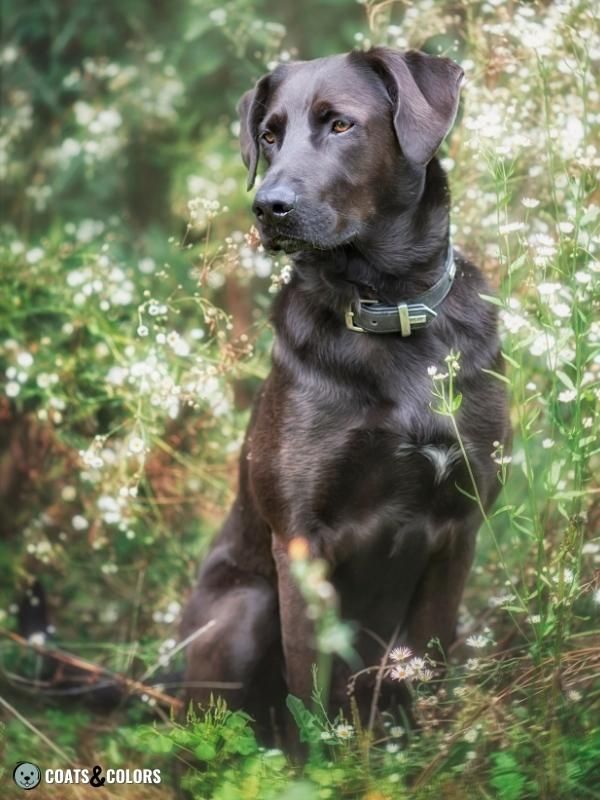

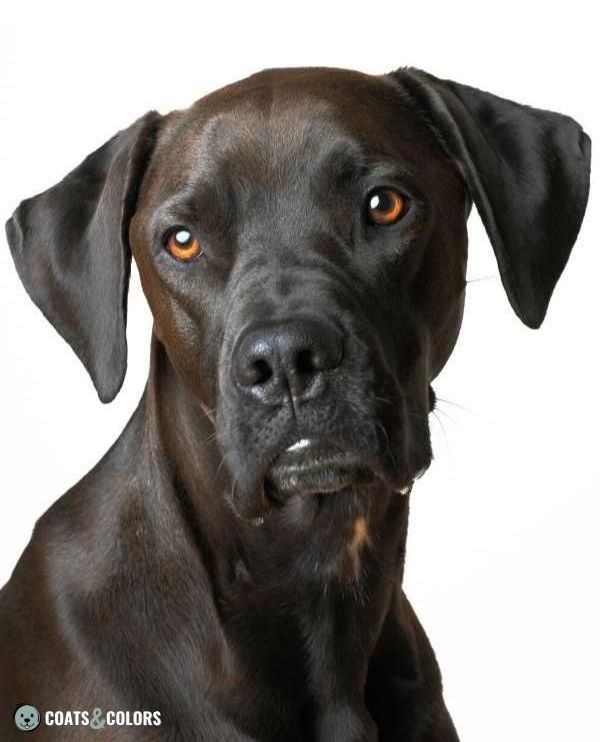

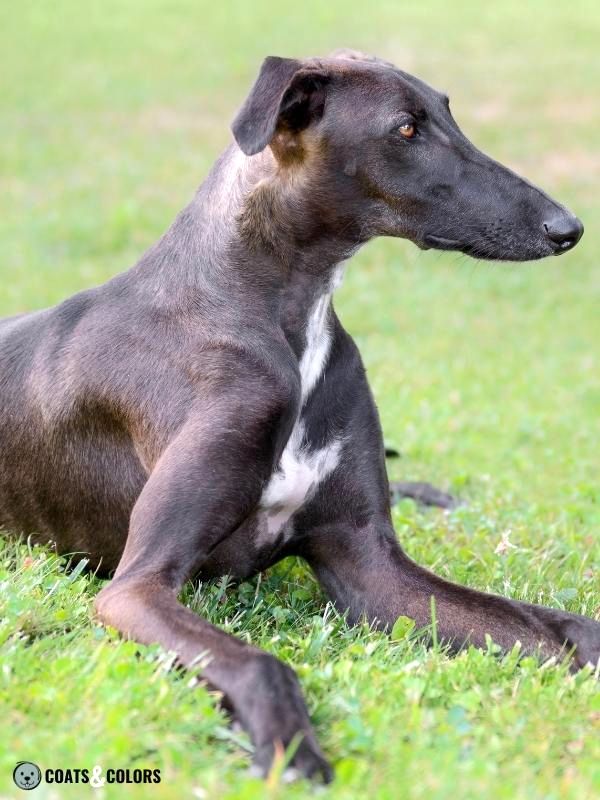
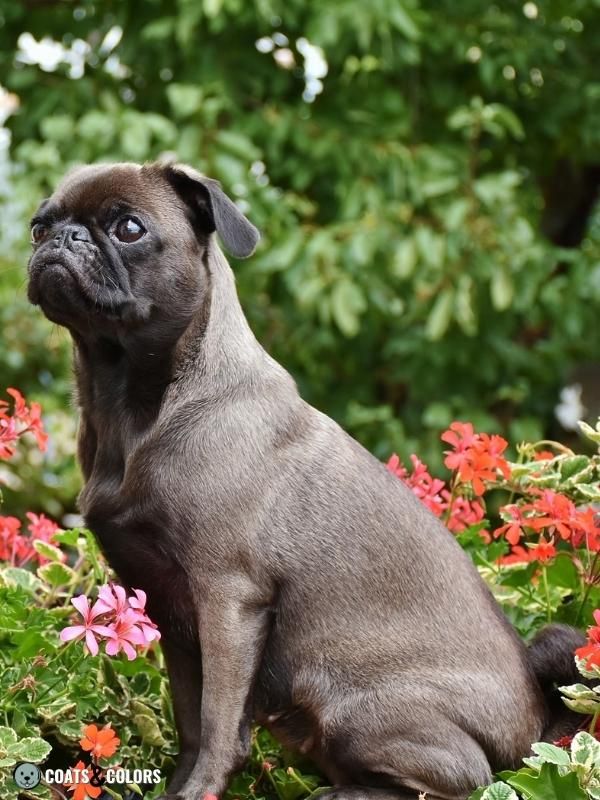
Brindle Seal
Brindle causes vertical eumelanin-pigmented stripes on all yellow-red areas in a pattern.
The brindle allele (kbr) is a structural variant that combines KB and ky elements. The eumelanin-pigmented stripes essentially express KB, while the yellow areas in-between express ky.
The dark stripes in a brindle pattern (kbr/-) can also be affected by whatever causes seal.
In seal brindle, the dark stripes can also fade to a bronze-coppery color along the flanks.


And there is another possibility to combine seal and brindle:
In dogs with a KB/kbr genotype, seal can make some of the brindle visible again, despite the dog also being dominant black. This phenotype could also called ghost sable brindle or just ghost brindle.
On dogs that are brown brindle, blue brindle, or lilac brindle, this will be way less visible.
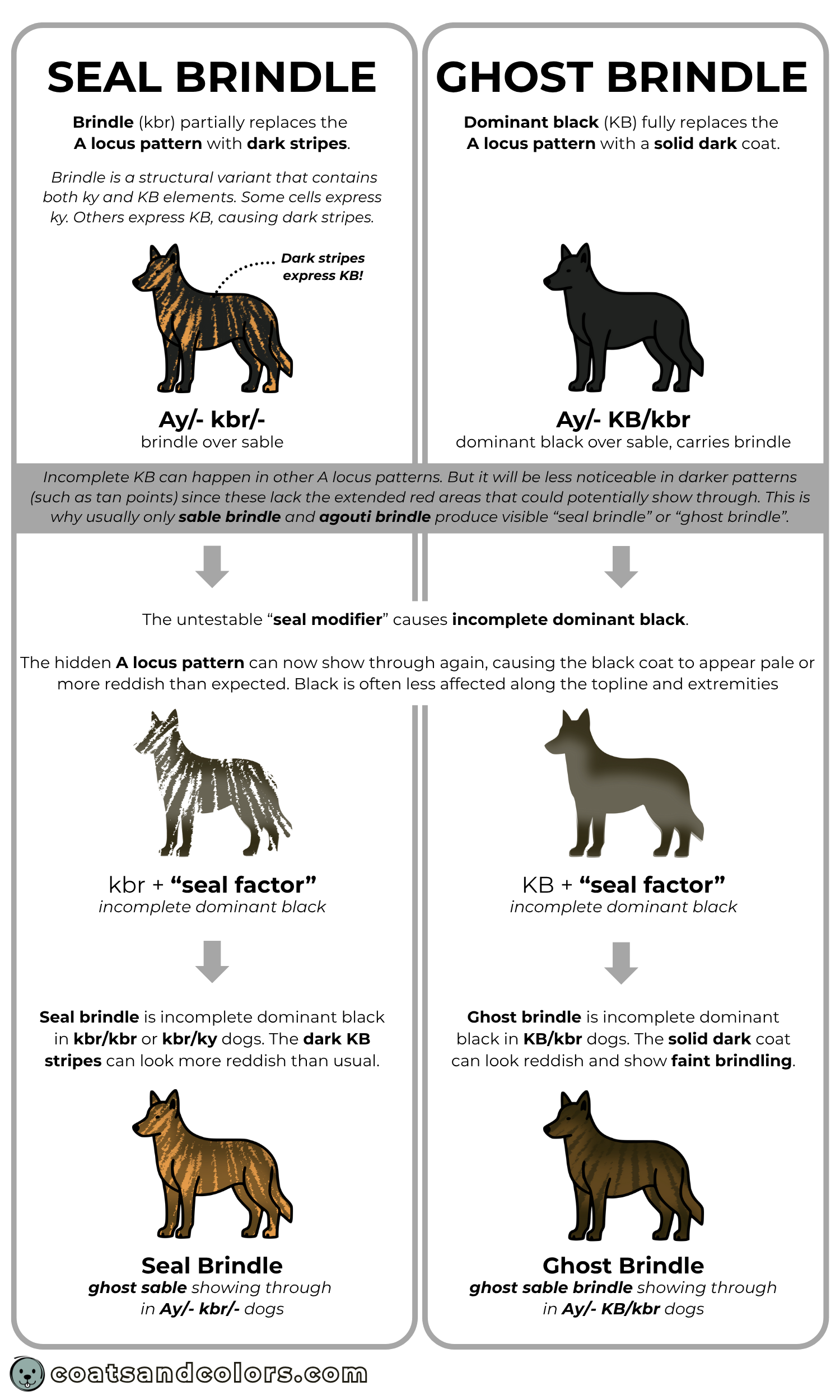
Blue Seal
On a dominant black dog with blue pigment (B/- d/d) and hidden sable (KB/- Ay/- ), seal will not always be as obvious as in black-based patterns.
But the telltale signs of seal are still the same. So you should expect to see a blue dorsal stripe and a blue-ish facial pattern on an otherwise coppery-yellowish coat.
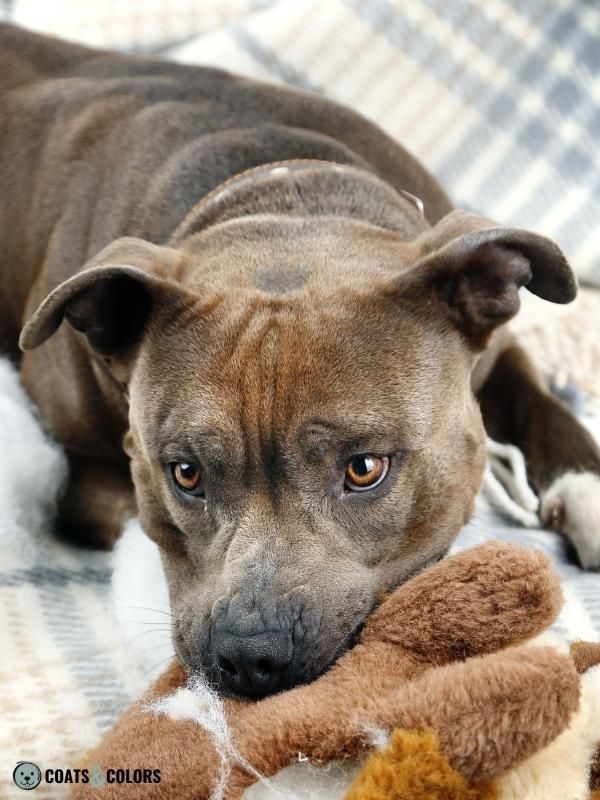

Liver Seal
A dominant black dog with brown eumelanin should be solid brown.
In a chocolate seal or liver seal dog (KB/- Ay/- b/b D/-), the reddish shades showing through might not be as obvious due to low contrast between red and brown.
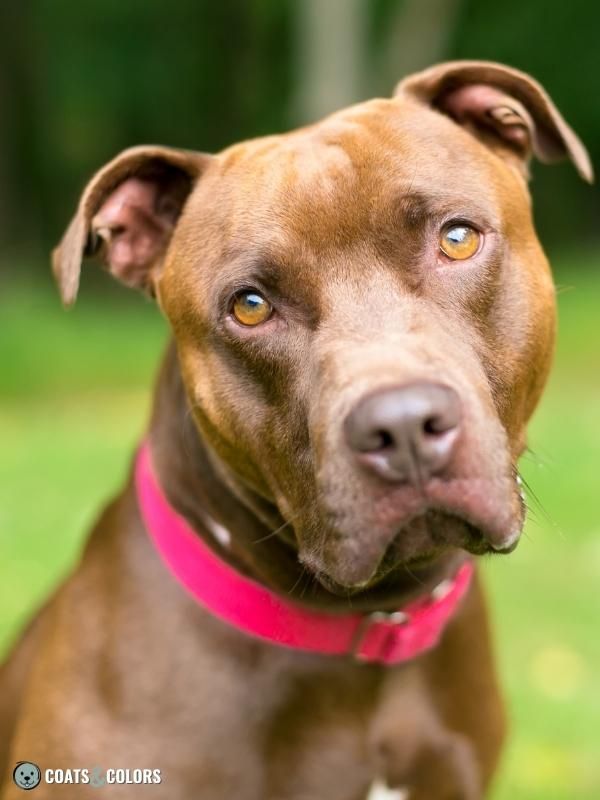
Lilac Seal
Lilac Seal is often barely visible, even in direct sunlight. In a lilac seal, you should expect a very pale lilac dog with a yellowish hue and an isabelline coloration along the midline, paws, and face.
Greying & Seal
Progressive greying can turn single eumelanin-pigmented hairs lighter and lighter until black pigment is faded to silver or brown pigment is faded to a sandy beige.
In theory, a dog can have graying and incomplete dominant black at the same time.
But graying only happens in furnished dogs which inherently makes it very hard to spot a seal phenotype or distinguish it from just a sunbleached coat.
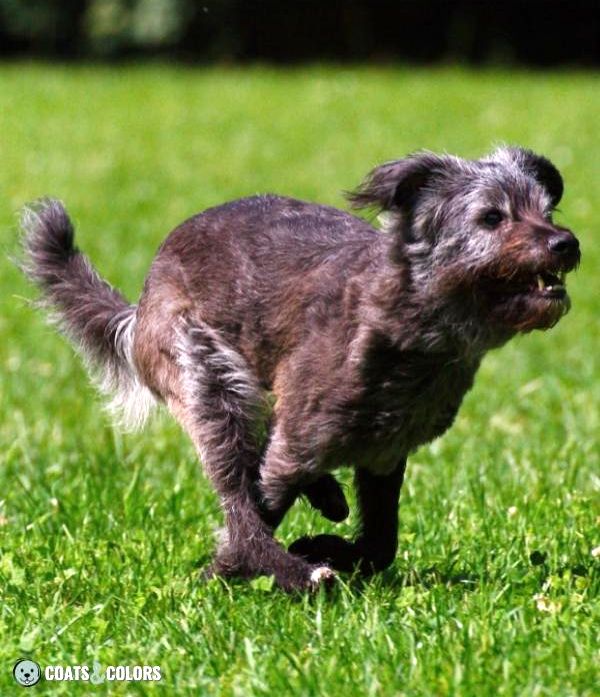
Seal Merle
Merle removes pigment (mainly eumelanin, only strong merle combinations affect phaeomelanin). This makes merle dogs more prone to show ghost tan since merle already deleted some of their eumelanin.
On a black dog, classic merle typically causes gray areas (it’s called “blue merle” for this reason).
In comparison, seal merle often creates very reddish or brownish undertones.
There are not too many dogs with this pattern (mostly, because not that many dog breeds that frequently come in seal also come in merle, at least not officially). Typically, the tan bleed-through in the black patches is also strongest mid-body and weaker on the extremities and tail, dorsal midline, and the face.
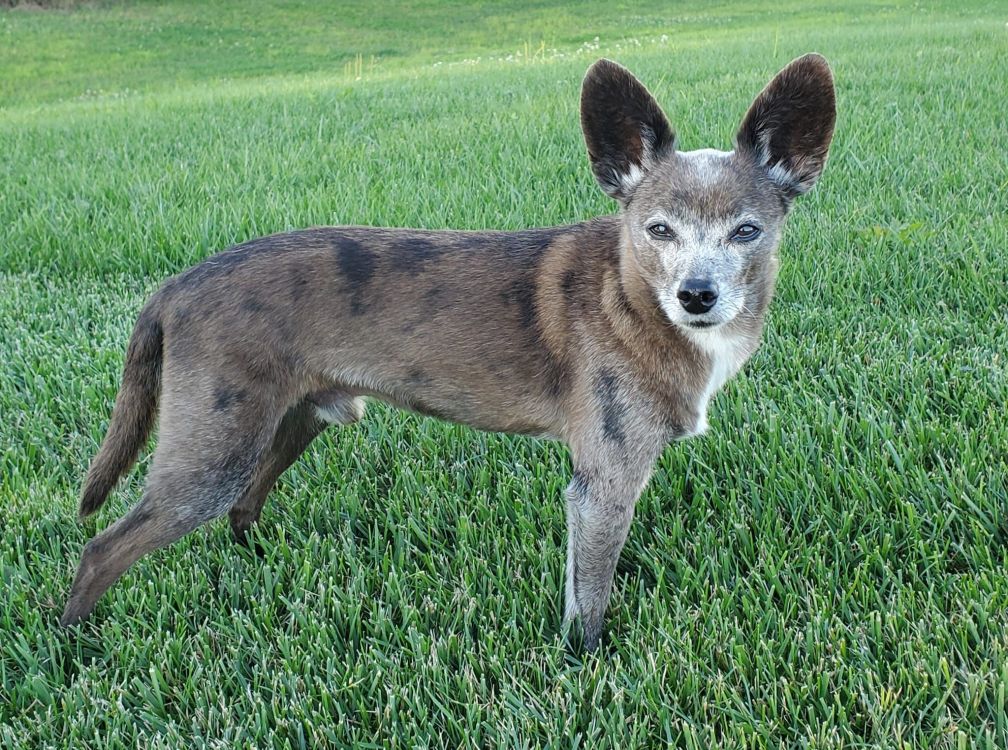
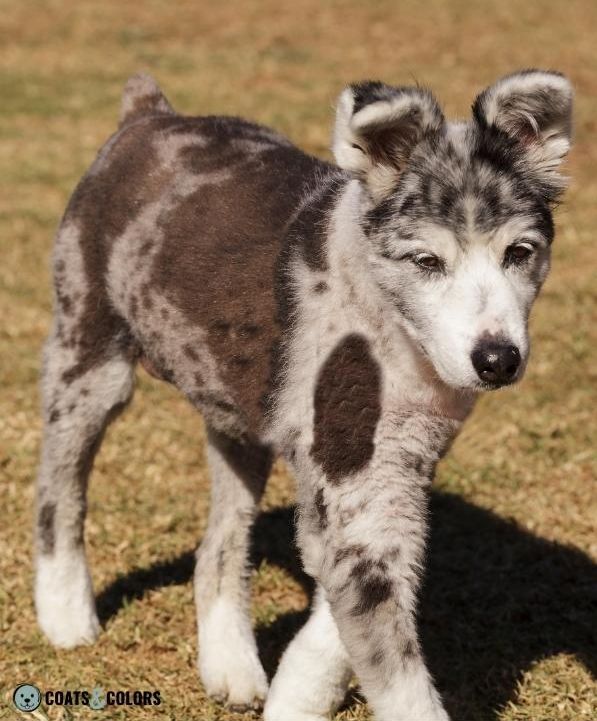
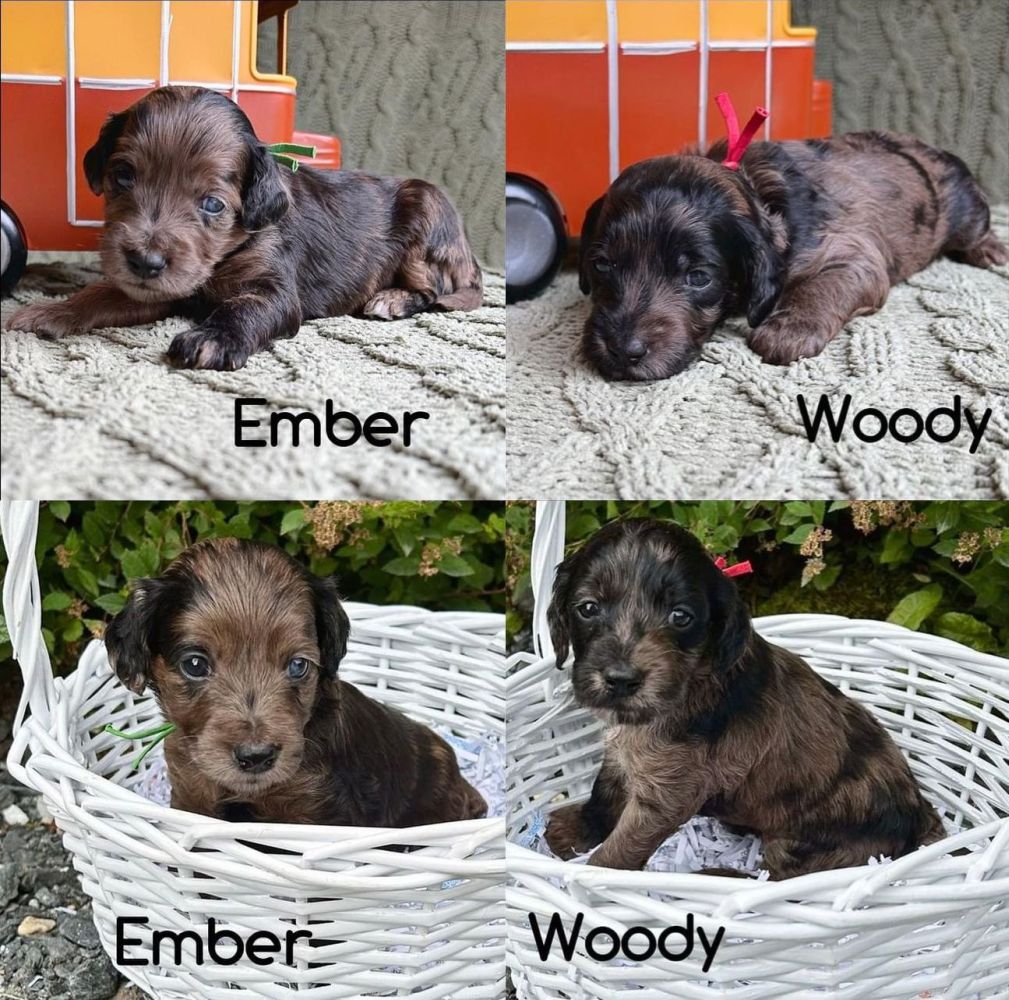
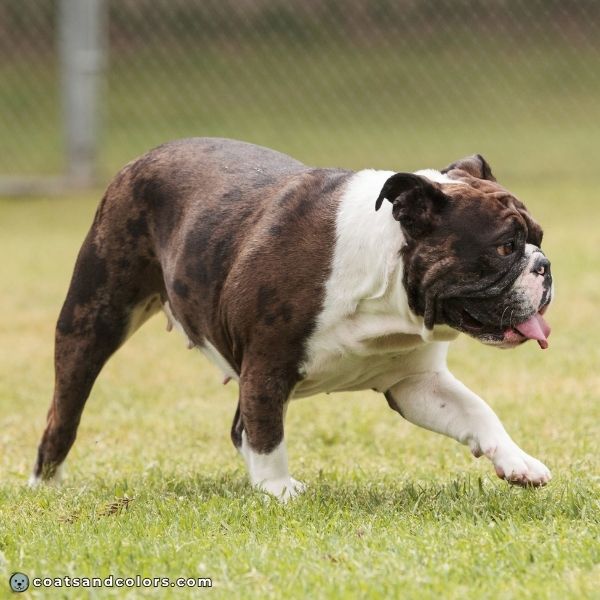
Examples of Ghost Tan
Ghost tan point happens in dogs with a KB/- at/- genotype.
They cause very faint yellowish or reddish markings where the normal tan points would be.
A ghost tan point phenotype on a tricolor dog is sometimes referred to as “ghost tri” or “ghost tricolor”. This includes all color variations like “brown ghost tri”, “blue ghost tri”, or “lilac ghost tri”.
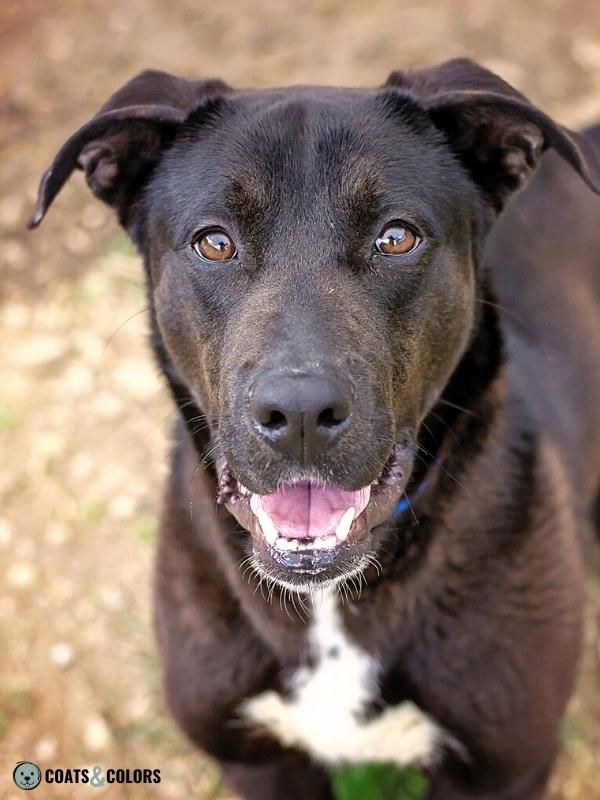
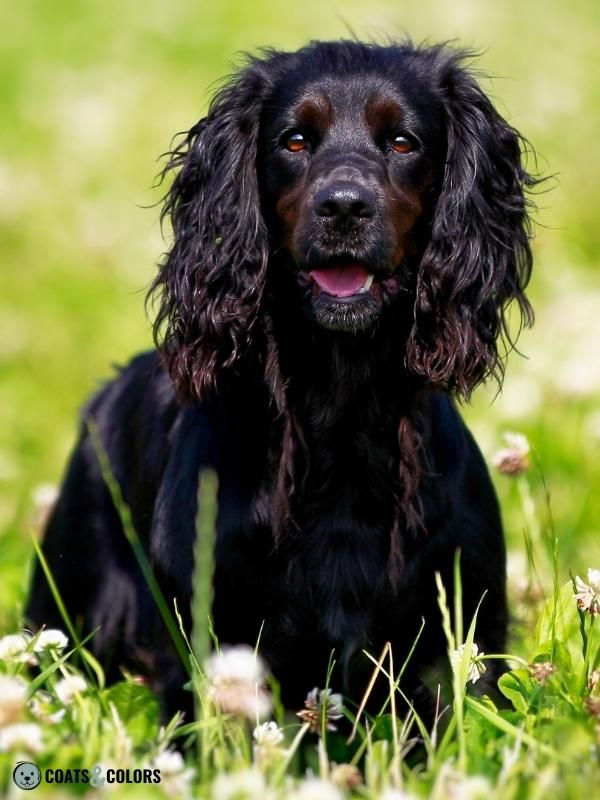
Ghost Saddle
A gost pattern can not only happen on dogs with classic tan markings.
It also happens in dogs with a hidden creeping tan (KB/- asa/at) or saddle pattern (KB/- asa/asa).
But again, the red tint is only visible in areas that would have been tan-colored if the dog had expressed his agouti gene pattern. This causes a ghost saddle pattern.
Seal Look-Alikes
Since ghost tan patterns can be hard to spot, they are often confused with other terms or phenotypes:
- Some northern breeds like the Siberian Husky or Alaskan Malamute also call some of their domino varieties “seal”. These dogs might have a reddish cast to their coat, but since these dogs are mostly ky/ky at/-, they can not really seal as described above.
- Atypical merle can give the coat an overall lighter or brownish tint than expected.
- In normal recessive black dogs, there can be some residual phaeomelanin on the legs or face.
- An extended melanistic mask on a very shaded sable can mimic seal.
- Some rusting, and sun-bleaching can cause a coppery shade without the dog being seal.
- Some ky/ky at/- dogs have very sooty tan markings.
- Some KB/- domino dogs can have a reddish grayish pattern showing through.
Learn More
Links
[1] National Purebred Dog Day: The Mysterious Color.
Image Credits
© steffstarr/yayimages.com
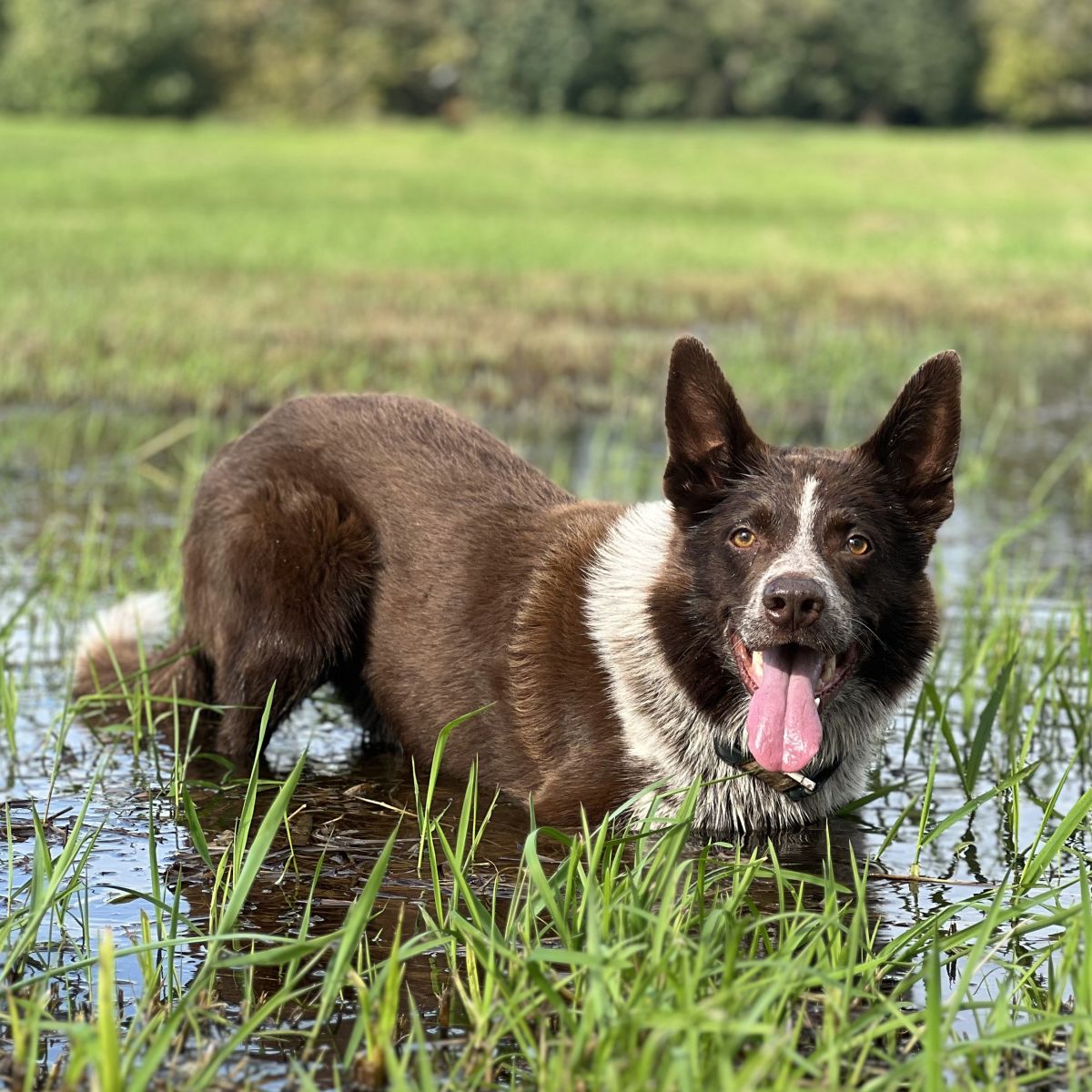
Hi! I’m Steffi. I am a biologist and a big time dog nerd. You are curious about coat color genetics? You’ve come to the right place! Read more.

